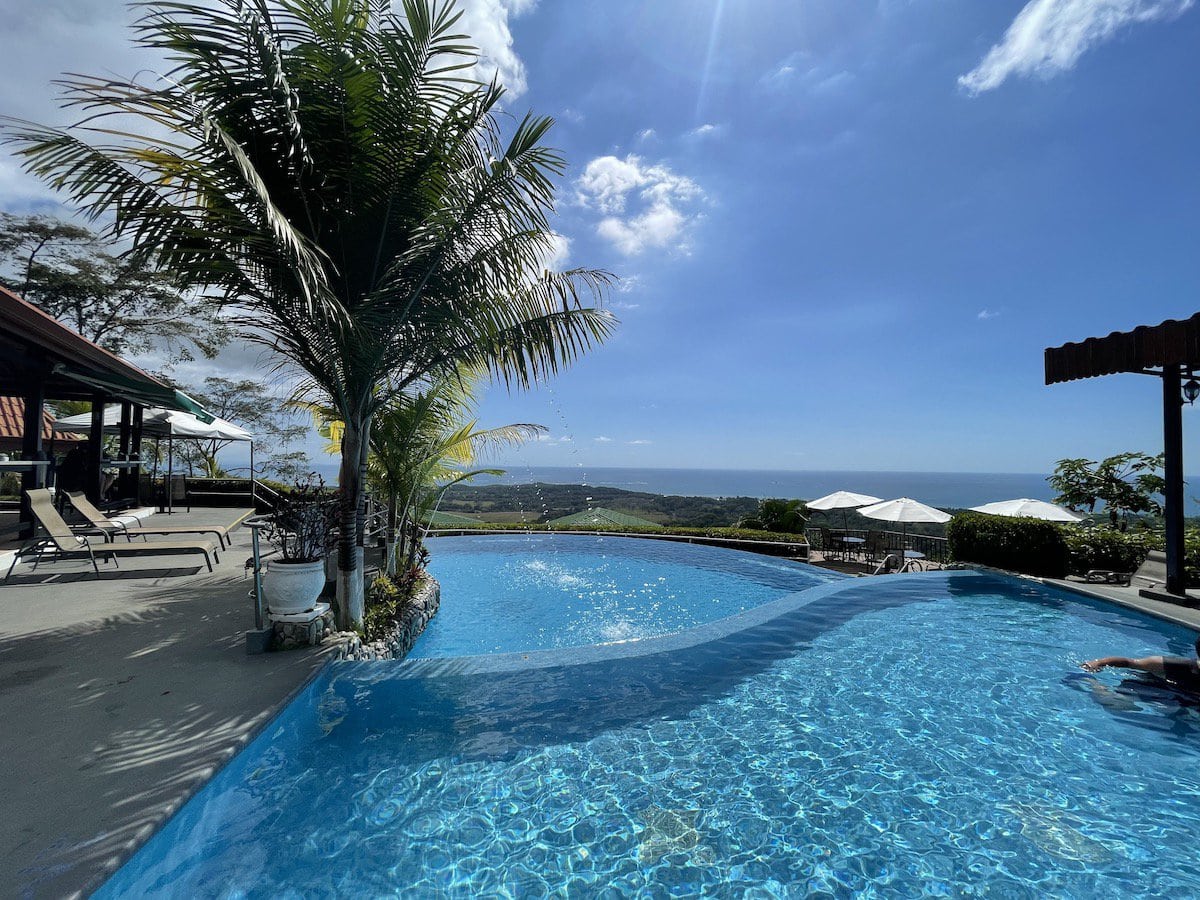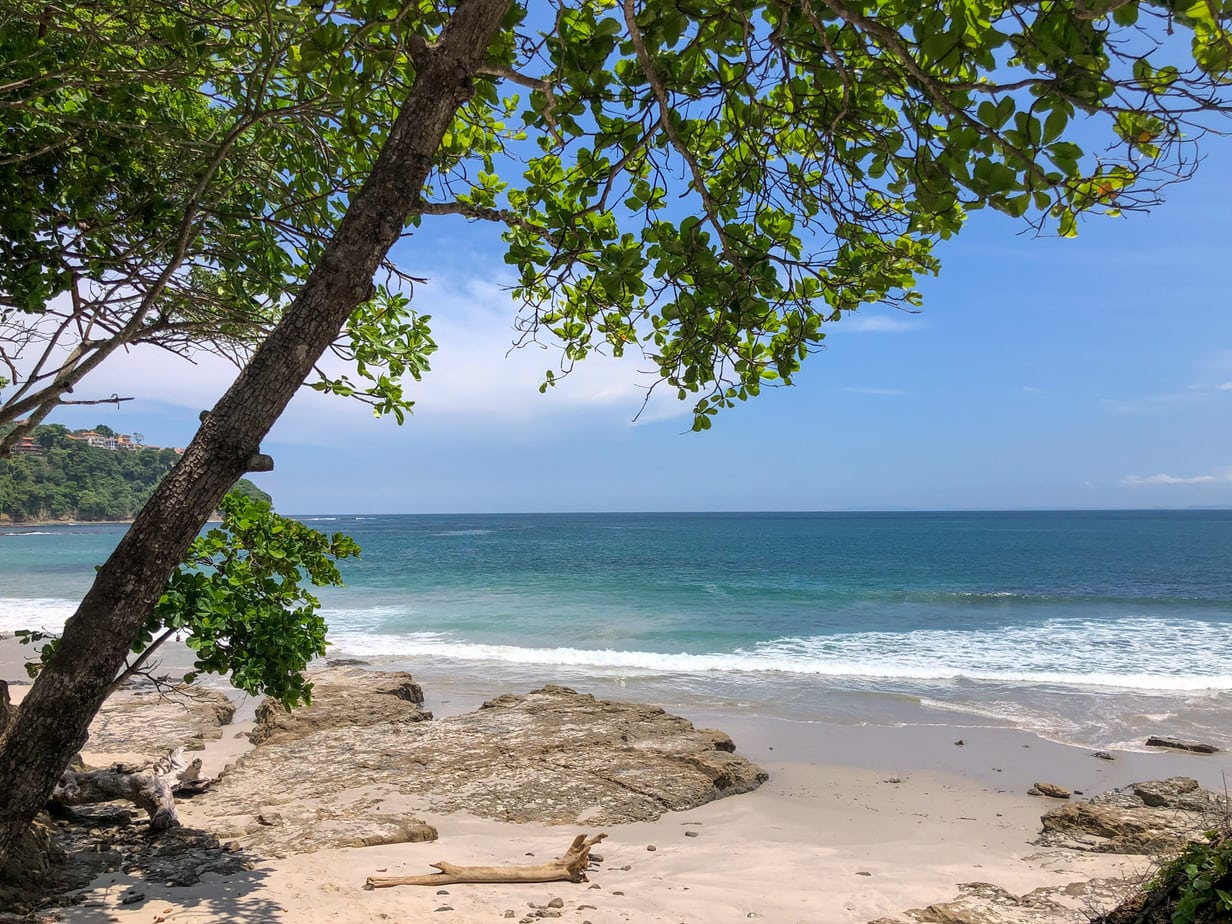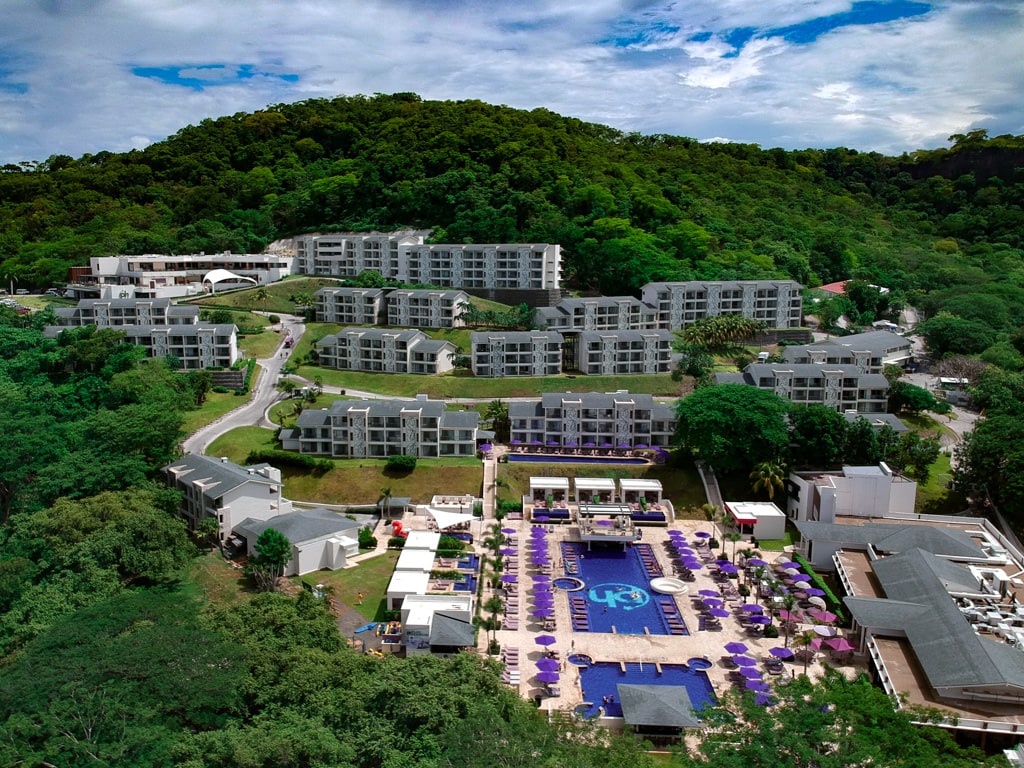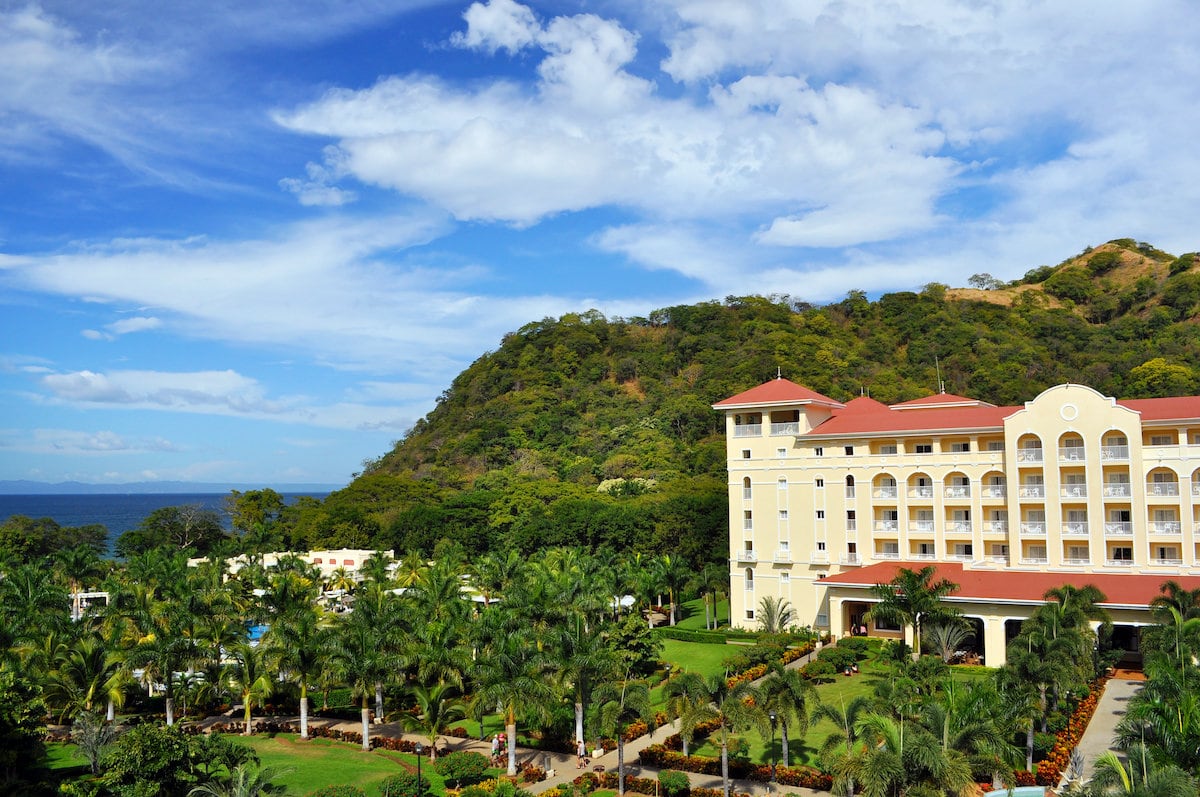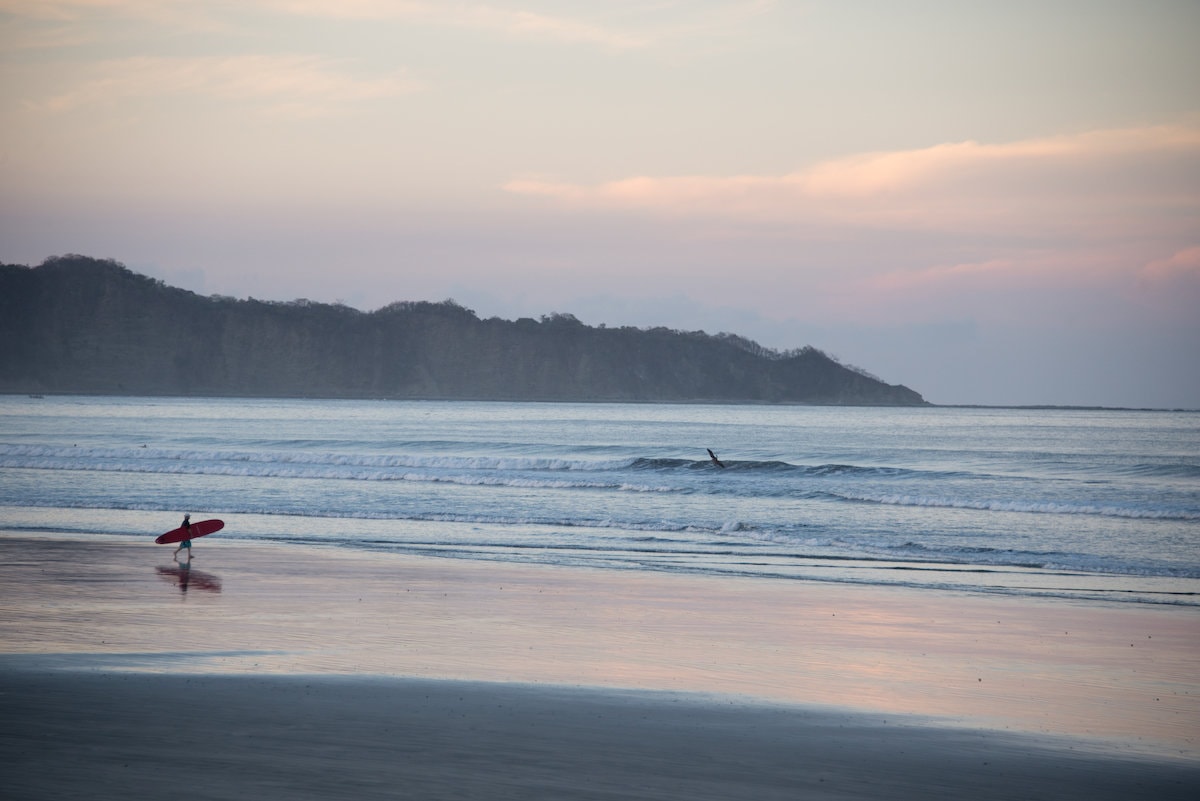Best Black Sand Beach- Costa Rica
This post may contain affiliate links.
This list of beaches will help you find your best black sand beach in Costa Rica.
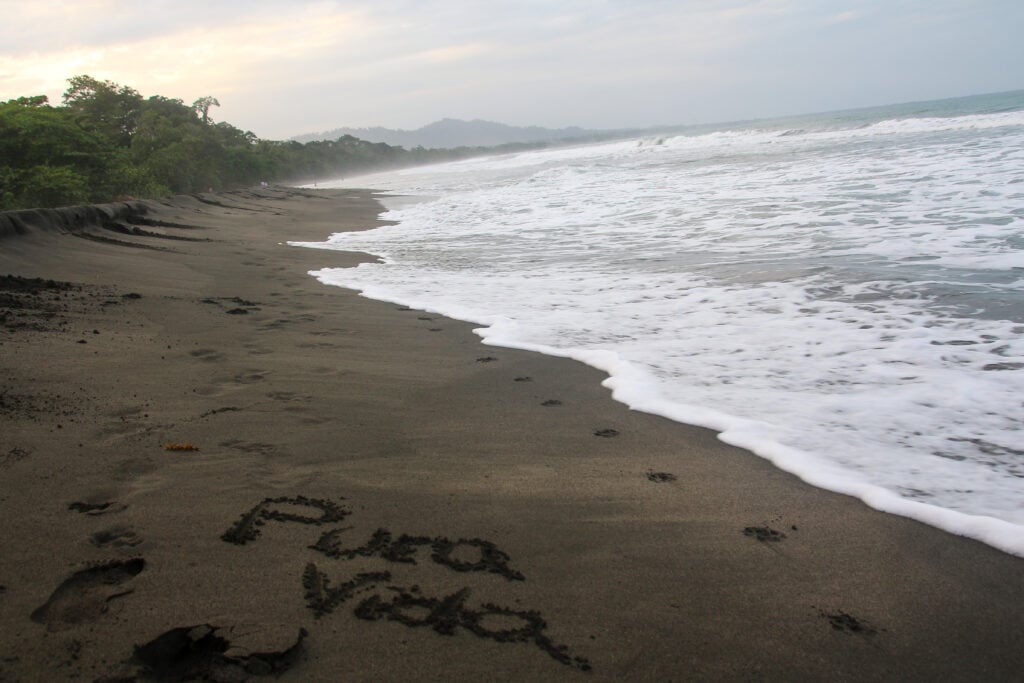
How are black sand beaches formed?
Black sand beaches form as a result of both sea currents and volcanic deposits of rock in different places around Costa Rica. Some of the black sand is even magnetic! Not so with the white sand beaches in Costa Rica, which are also gorgeous.
The sand on black sand beaches comes from deposits of volcanic material such as lava and basalt rocks. Since there are a lot of volcanoes in Costa Rica, it makes sense that there is quite a lot of black sand in Costa Rica. Other places in the world that have a high concentration of black sand beaches include the Aleutians, Hawaii, and the Canary Islands.
White sand beaches, on the other hand, form where there are large deposits of coral. This article from the National Ocean Service will give you more information on how beach sand forms if you really want to nerd out.
If you are dying to see a black sand beach while in Costa Rica, it’s relatively easy as the aptly named Playa Negra is just about 30 minutes from the Liberia Airport and Playa Mantas is just about 45 minutes from the San Jose Airport.
RELATED POST: 20+ Best Pacific Beaches in Costa Rica

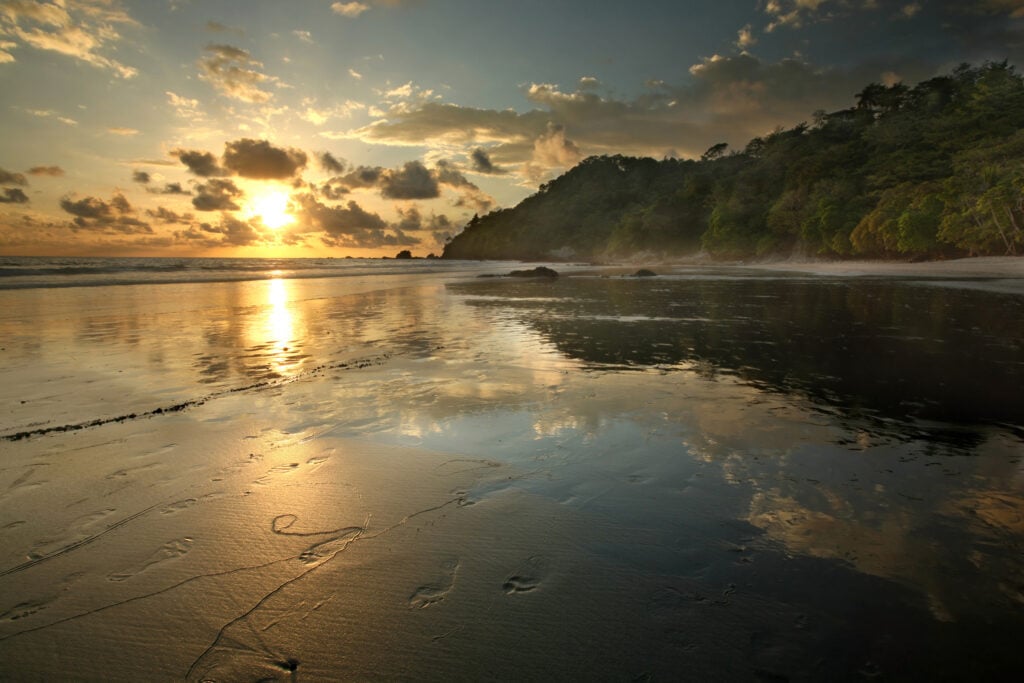
Tips For Families When Visiting A Black Sand Beach Costa Rica
Because of the dark color, the sand on black sand beaches is hot, hot hot! A lot of people will head to the shore in the morning. When they try to get back to land, they realize just how daunting the task is to get back to their cars because the sand is so hot and you can burn your feet. If this sounds awful, then you might consider visiting a white sand beach instead.
The sand feels even hotter if you have to carry your beach items or a kid back with you. This is because you have extra weight on your body and may not be able to walk as fast.
While this might seem obvious, it is important to keep in mind the following when visiting a black sand beach in Costa Rica:
- Make sure to bring closed toed shoes for everyone to the beach. This way, when you walk on the hot, dry sand you know the bottoms of your feet won’t get too hot.
- Bring a blanket or beach towel with you to sit on if you want to stay around until high tide. It takes a while for the hot sand to cool down at low tide, and you don’t want to have to leave the beach
- Store drinks and food in a shady area so they don’t overheat. (No one likes a hot beer!) You may want to bring a beach umbrella to the black sand beach just for this purpose.
RELATED POST: This Is Your Ultimate Costa Rica Packing List
List of Costa Rican Black Sand Beaches
Join me over at my favorite place- Instagram.
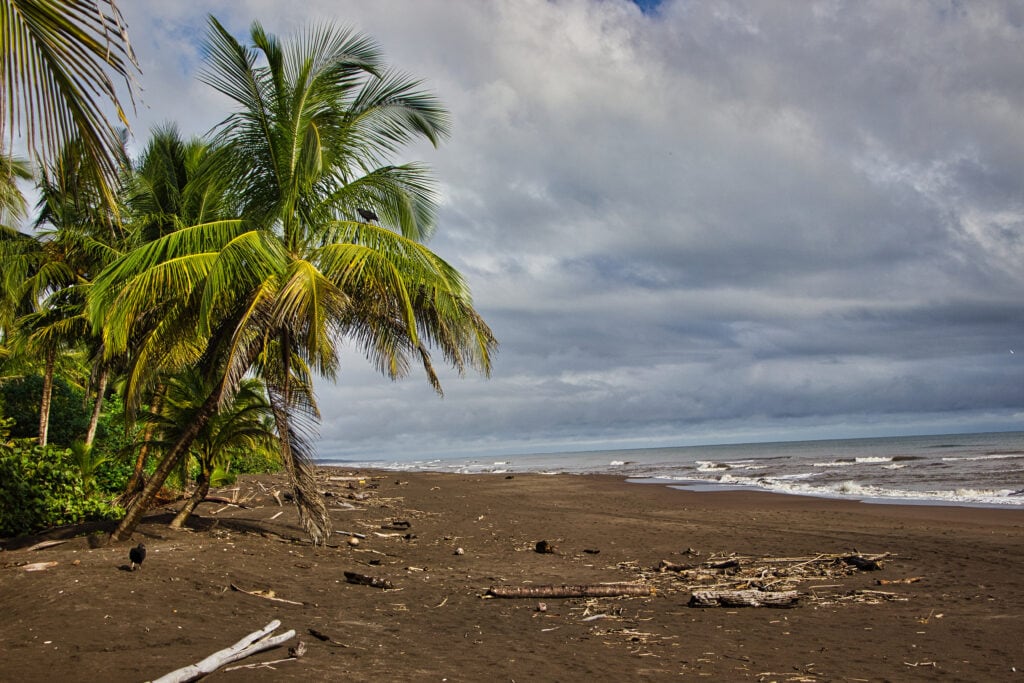
Playa Negra, Puerto Viejo
The name says it all as it translates to “Black Beach.” This is one of the most famous black sand beaches in Costa Rica, and is located on the Caribbean coast.
This beach is right next to Puerto Viejo de Talamanca, a popular Caribbean beach and party spot. While Puerto Viejo has a lot of nightlife and rasta vibes, Playa Negra is relatively calm and has a much more small-town vibe.
Playa Negra, Guanacaste
This is a favorite surfing spot on the Pacific coast. Don’t confuse it with the other Playa Negra as mentioned above. This Playa Negra is located close to the popular Playa Tamarindo, but offers much less of a party vibe. Playa Negra in Guanacaste is known as a great surf beach. There isn’t much in the way of a town here, just a few restaurants and street food vendors.
RELATED POST: Best Places to Learn to Surf in Costa Rica
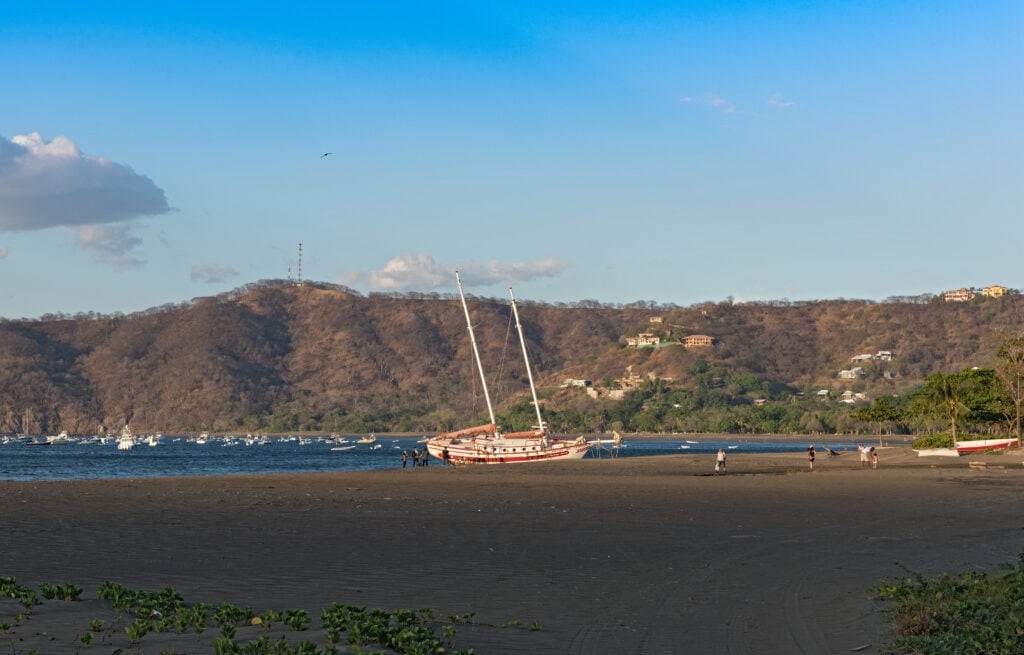
Coco Beach, Guanacaste
Just 30 minutes from the Liberia airport, this beach sand is not as black as other Costa Rican beaches. Playa del Coco is one of the most popular beach towns in the area as it is a jumping-off point for divers, and has a rocking nightlife.
We love to eat traditional Costa Rican food at El Ancla or enjoy a gorgeous sunset with a cocktail at Cafe de Playa. We generally stay at the much calmer, more family-friendly Playa Ocotal next door, however.
RELATED POST: Guide to Planning a Trip To Costa Rica For Your Family
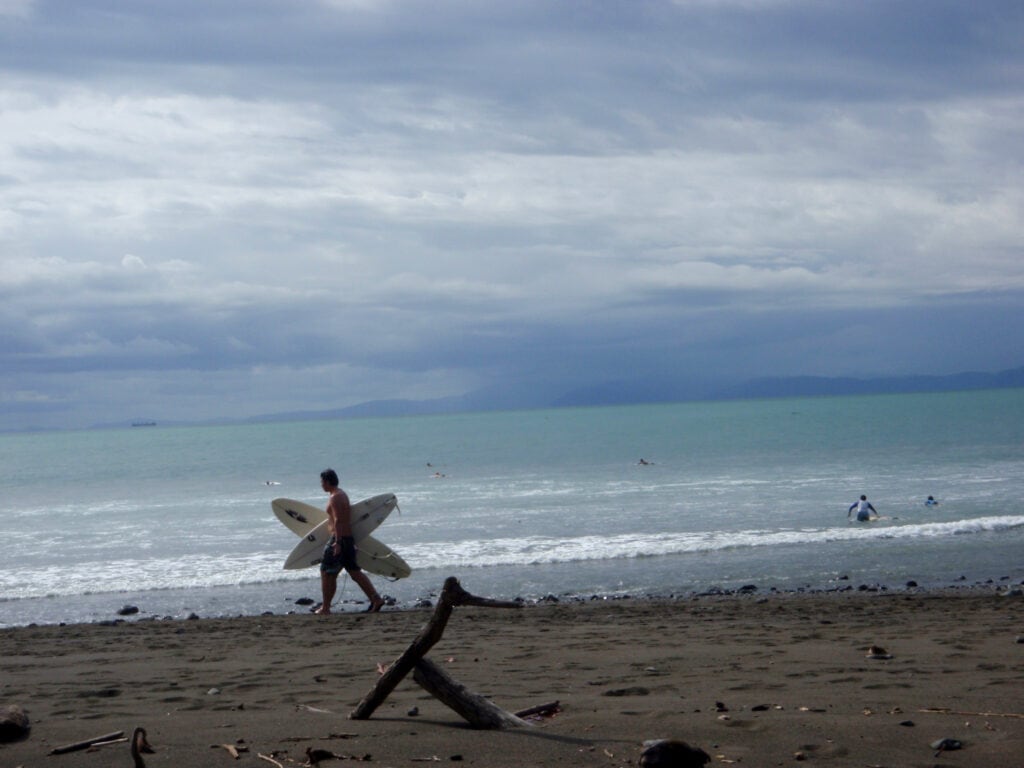
Playa Pavones, Puntarenas
One of the most popular surf beaches in Costa Rica, this beach is located near the Osa Peninsula in the very south of Costa Rica.
It’s hard to get to I’d definitely rent a car to get here, and fly into the San Jose airport– Liberia is just too far. And be prepared to fall completely in love with everything about Playa Pavones.
Playa Hermosa, Puntarenas
Watch out! There are three Playa Hermosas in Costa Rica, and they are all beautiful. The only Playa Hermosa that is a black sand beach, however, is Playa Hermosa Puntarenas. A surfer’s paradise, located right next to the famous Jaco beach, this beach has hosted a number of world surf championships.
Playa Hermosa is not great for swimming- the waves are big and the undertow is strong. The town and community are strong, evidenced by the great restaurants and abundant Airbnbs. The proximity to Jaco is a draw, as you are just a few minutes away from a bigger town, but without the party vibe.
I will say- we prefer to stay in Jaco with our kids and then visit Hermosa, but either way- the beaches are gorgeous.
RELATED POST: Costa Rica With Kids- The Complete Guide
Playa Carbon, Guanacaste
Playa Carbon’s name says it all-it’s a carbon-black colored beach. Carbon Beach is one of the four beaches located inside the Marina las Baulas National Park near Tamarindo Beach, Costa Rica. It’s also near Playa Grande- so you can get two black sand beaches in one if you go to Tamarindo!
Something interesting about this beach is that the surface sand is black, but the sand just underneath is a gorgeous white and tan color.
RELATED POST: Costa Rica’s National Parks Guide
Playas Danta and Dantita, Guanacaste
These might well be my favorite two beaches in all of Costa Rica- and some of the most beautiful beaches I’ve ever seen. These are located in the relatively new and definitely upscale Las Catalinas “town.” They are also a stone’s throw from Playa Potrero and Playa Flamingo, some of our favorite places to visit.
These beaches have a black sand that looks like a danta’s (tapir) skin. These are one of the only black sand beaches that do not get hot, as they is completely surrounded by shade. Playa Danta is one of the first beaches we visited when our older daughter was an infant, and the shade and amenities on the beach are divine.
You’ll need to hike from Danta to Dantita, so bring sturdy shoes and lots of water and snacks. There are no services at Datita.
RELATED POST: This Is Your Ultimate Costa Rica Packing List
If you would like to talk to me about a customized itinerary or specific Costa Rica travel advice for your family, (zero sales- just advice!) check out my “Ask Christa” page for more information on custom Costa Rica trip planning geared towards families.
Check out some of our most popular Costa Rica guides for families:

Christa Jimenez
Welcome! I’m Christa, a Spanish teacher married to a handsome Costa Rican and mother of two bilingual daughters. We’ve spent over 25 years living in and traveling to Costa Rica with our daughters, and this website is my love letter to all things Costa Rica- and to bilingual parenting too. You can read my full story here. Thanks for stopping by!



